Europe still has castles from the medieval period dotted around the landscape. These fortresses would normally house royalty and keep them and were the strongest form of defense available. Many people have either read about them or seen them in movies but not many know what it was actually like to live in a castle back in medieval Europe.
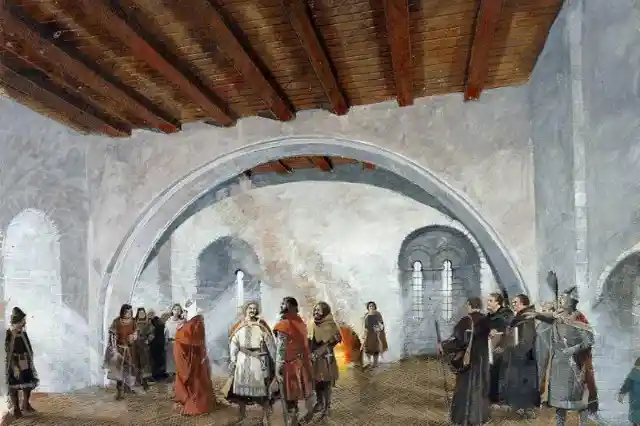
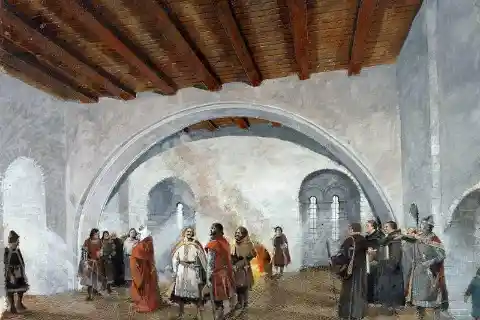
Keep reading to find out what it was really like to live in a castle, sure living in a castle was better than a peasant's hut, but it's not what you'd expect.
Castles Were Crammed Like A Sardine Can
When a castle comes to mind, a lot of people think about royalty and luxury at the same time. But they actually had hundreds of people living in the castle with them.
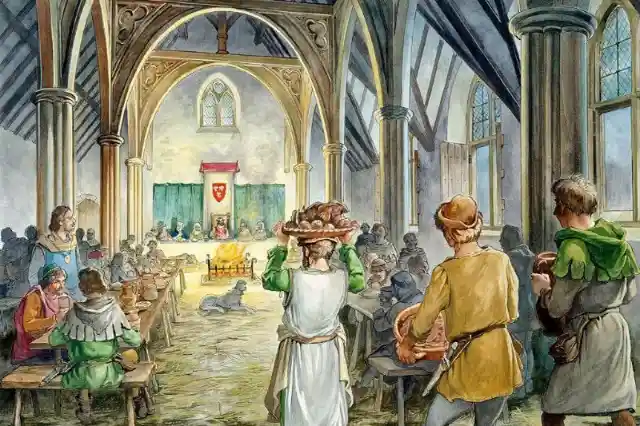
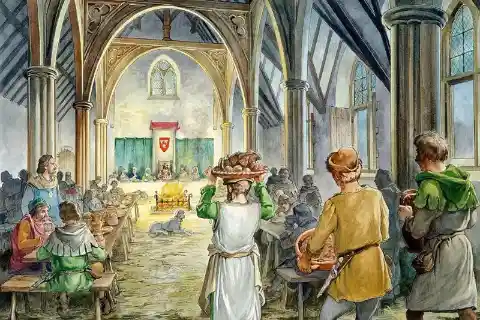
The one who ruled over the castle would normally house all of his relatives as well. The castle also needed to have soldiers in case of a siege and it also needed servants to keep the castle well maintained. So inside the confines of its walls, there was basically a whole town! Let's not even mention all the guests that the lord would often have over.
Nobody Wanted To Be In The Dungeon
Castles had countless rooms including chambers, kitchens, banquet halls, throne rooms, and even a dungeon. If you did something to upset the lord you'd be thrown into the dungeon.
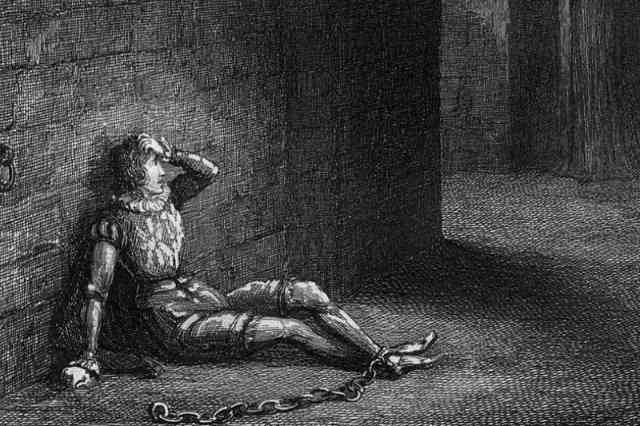
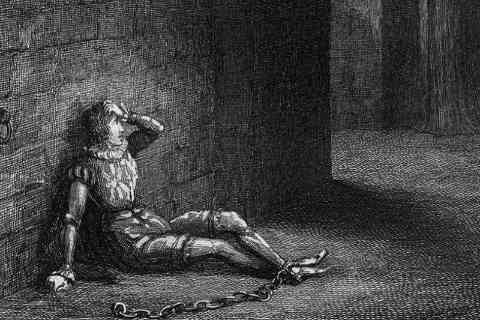
The dungeons weren't maintained like the rest of the castle, in fact, they were normally at the lowest point of the castle and sometimes they even had torture chambers. If the lord deemed it necessary you would find yourself in that unfortunate situation. You'd be lucky if you were just left to your own devices inside your cell.
Rats Were Frequent Guests
Since castles were dark, damp, and cold they made the perfect breeding ground for rats. Today if you saw a rat inside your home you might freak out. But people wouldn't give them a second glance inside the medieval castles of Europe.
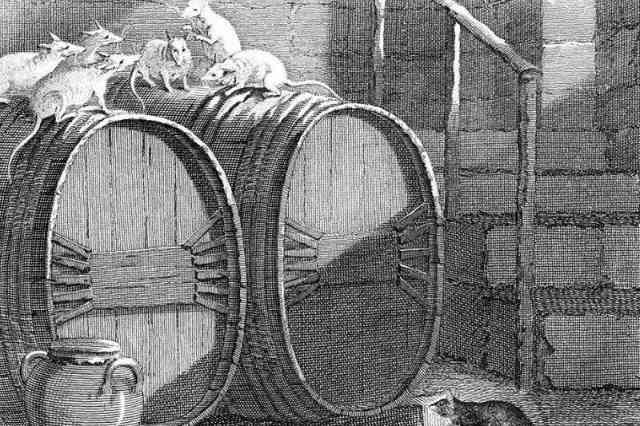
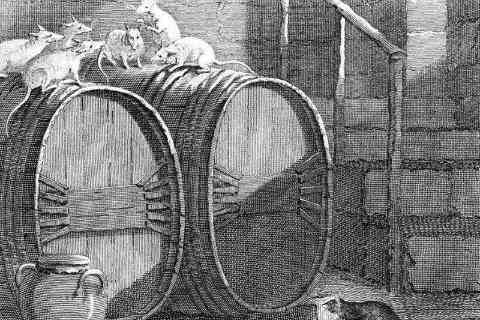
But even though they were commonly found that didn't mean they weren't a problem. A lot of people feared rats because of what a lot of them carried. Diseases transferred from rats was a serious problem in medieval Europe.
Bathing Was Quite The Spectacle
If you lived inside a castle, odds were that you bathed more frequently than commoners that lived in villages. But that doesn't mean that it was like it is today.
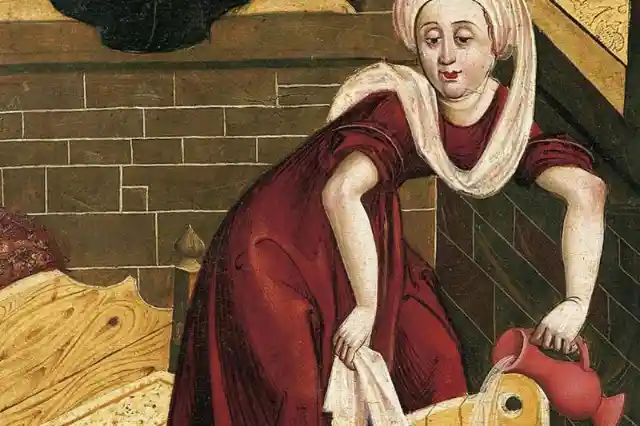
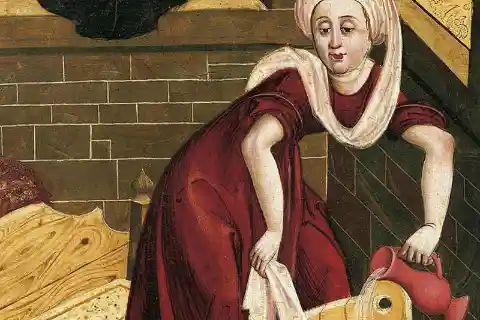
There was no plumbing so finding clean water was a difficult task. The water would have to be heated on a fire and then taken in the tub to wherever it was needed. Because of the complicated procedure, people would often share the same tub and not even get any privacy when they did so. It wasn't a sanitary process to be sure.
Don't Sleep in
Without any form of electricity, people would have to rely on candlelight and the sun. So people would have to be as productive as they could when the sun was up by waking up as early as possible.


For defense, castles had little to no windows which meant that they were incredibly dark even on the sunniest days. A lot of people would wake up as the sun would rise to get the most out of the day, this was the same for any work that happened outside the castle walls. Servants would wake up before their lord to get a fire ready and prepare them their first meal of the day.
No Warmth Here!
Because they were made out of stone for maximum defense, castles were not a place of warmth. They may have kept the rain and wind out but the cold was a problem.
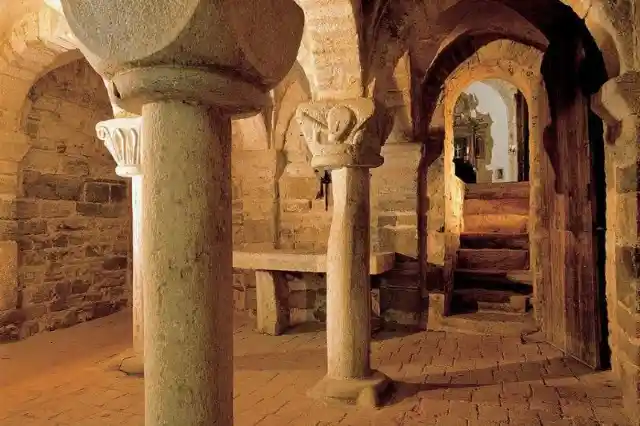
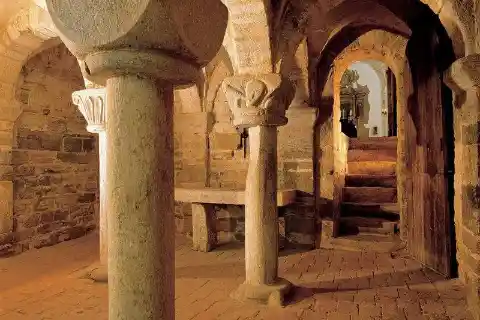
Stone does the opposite of insulating actually keeps the cold inside its walls. So if the castle was in a particularly cold region this was a problem. Even during the day, no much light came in through the small windows. To sum things up, castles were similar to iceboxes.
No Privacy
No matter how strong castles looked from the outside, most of them were actually open plan on the inside. This meant that there weren't many private quarters for the servants and they'd have to share communal areas.
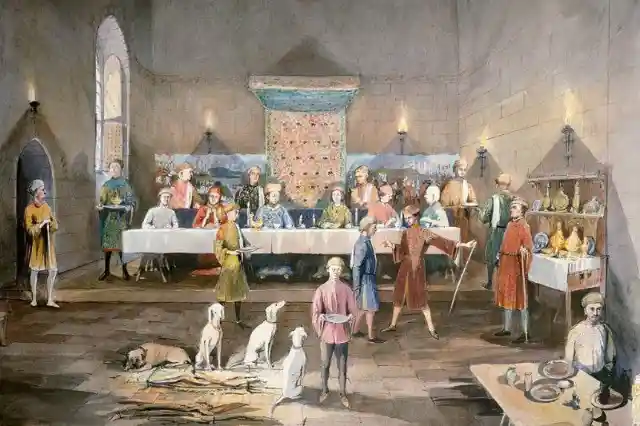
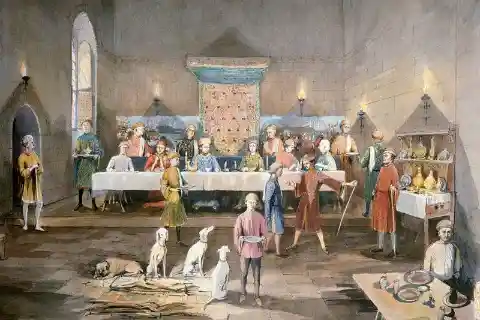
The lord and the lady would always have their own private quarters as well as a few other high ranking people in the castle. But most of the people living in the castle would have to sleep in communal areas with no privacy. To make matters worse they would have to share bathrooms, dining halls, and even more! You would never be alone inside a castle.
And You Thought Your Dinner Parties Were An Undertaking
Now think about the holiday season and how much of a chore it is hosting a Thanksgiving dinner. That was nothing compared to a banquet inside a castle. Servants would often have to wait hand and foot for the lord and his guests when they would have extravagant feasts.
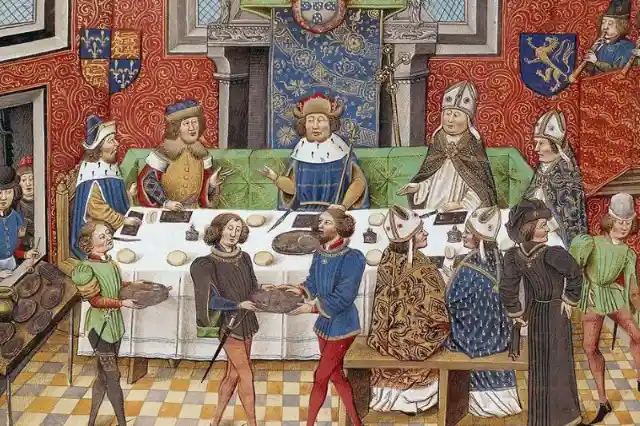
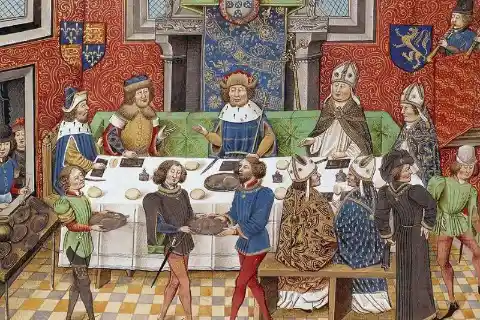
The servants would have to cook up many meals without the kitchen appliances we have today and their dishes would have to be impeccable and suited for a lord. So the food had to be prepared and served at just the right time.
Lots Of Alcohol
Beer, mead, wine, and ale were normally what would be had during a meal. The best alcohol would be sought after and the lord would always get it over everyone else.
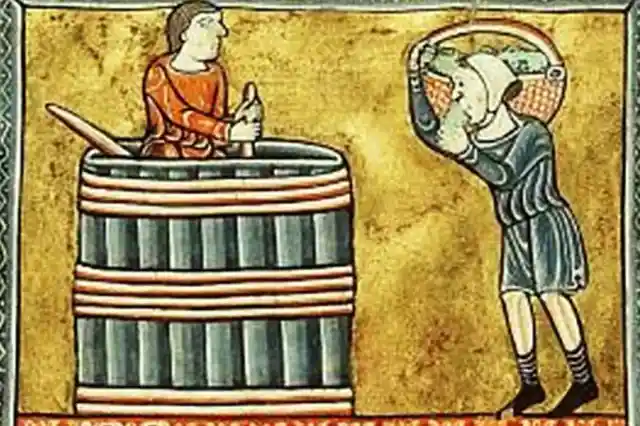
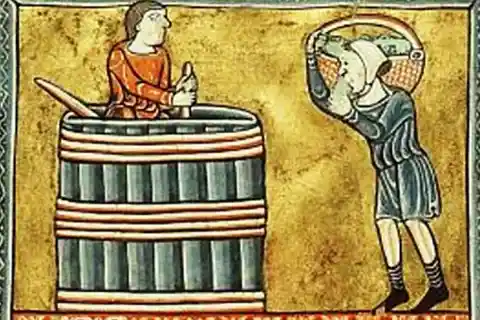
The servants in the castle normally drank beer over water since most water available wasn't clean. While the lord would drink whatever he wanted the lower classes had to drink whatever was available to them. They weren't picky.
There Was A Status Quo
Even back in the medieval period, there was a seating arrangement to show priority. When there was a banquet people would sit in order of importance.
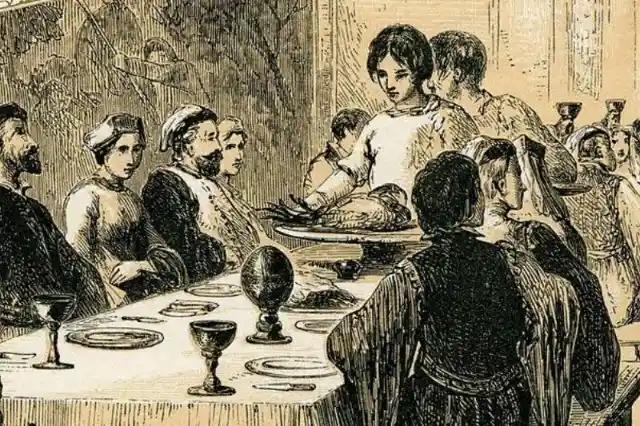
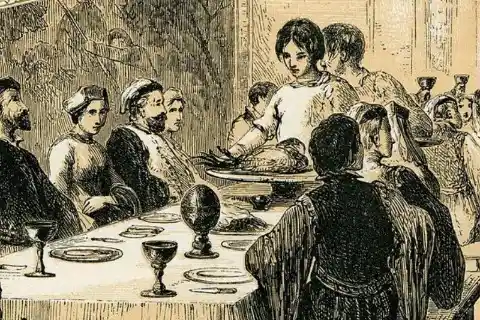
The most important was the lord and lady and they'd sit at the head of the table. They would be first served and then the people would be fed down the table. The most important and closest to the lord would sit closer to him. The lowest ranking people would be at the very end and get the worst quality food, but it was still better than anyone outside the castle would get.
The Floors Weren't Great
Keeping a castle clean was a huge undertaking when you don't even include the floors. Hundreds of people would be stepping on them every day, bringing in all manner of dirt and grime from outside, servants could never keep pace with that.
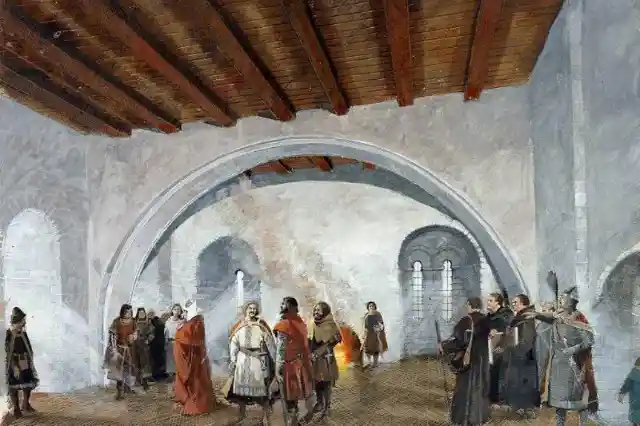
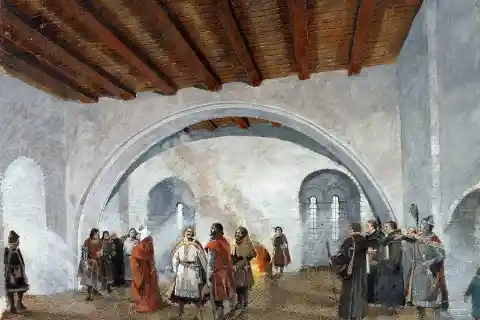
To help them in their job, they'd line the floor with herbs, sometimes reeds and even straw. When the items got filthy they'd be taken off and the floor would have to be scrubbed before more could be placed.
Kitchen Fires Weren't Uncommon
In the Middle Ages, the kitchens were primarily built out of timber. With so many different cooking fires going consistently, it wasn't unusual for fires to break out.
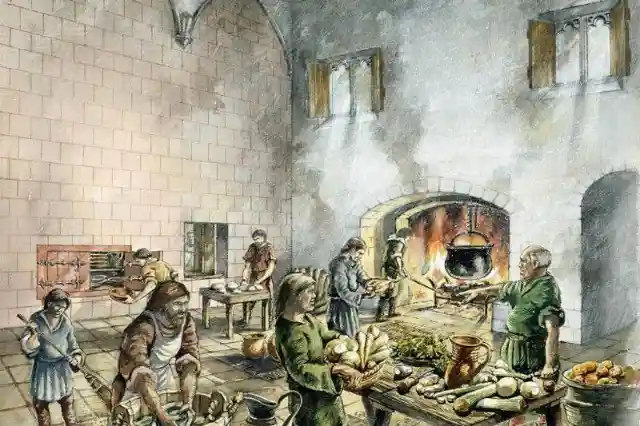
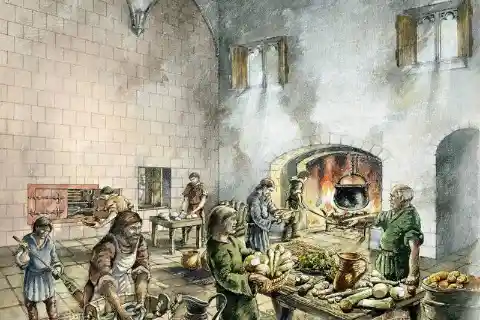
This would often result in a large-scale fire that usually ended with the entire kitchen burning down. Luckily, because castles were made of stone, the kitchens were often the only casualty of a fire. Eventually, the kitchens were built using stone as well, with hearths to keep the flames under control.
Going To The Bathroom Was Not A Pleasant Experience
Although today, many of us enjoy the luxury of doing our business behind closed doors and with running water, that wasn't the case during the medieval era. Back then, going to the bathroom meant sitting on a long bench made of wood with a hole in it.
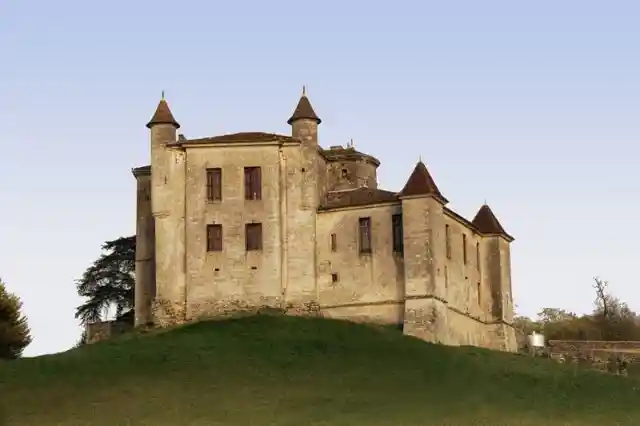
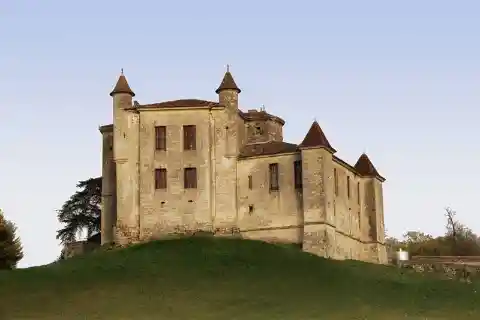
Very much like a modern-day Porta-Potty, the waste would drop into a cesspool, which would later be emptied into a castle's moat (if there was one). If that wasn't bad enough, there were no stalls, and most people did what they needed to do in the direct view of others.
Castles Smelled Incredibly Unpleasant
Due to the non-existence of plumbing and overall lack of hygiene, castles were not the healthiest or nicest-smelling places to be. Even though there were servants at the beck and call of the lords and ladies, it didn't mean that they were able to keep the castle pristine.
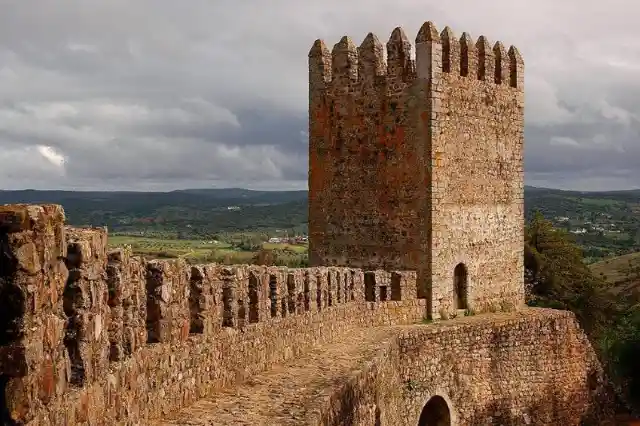

With little fresh water to go around, castles weren't cleaned to the standard of hygiene that many of us think of today. Because of this, sickness was rampant within the confines of a castle, and the stench was horrid.
Stairways Were Built Clockwise
In most medieval castles, almost all of the staircases were constructed clockwise. However, this was no coincidence, but as a form of defense. The reason for this is that if an enemy were to attack, those going up the stairs would have difficulty wielding their swords with their right hand, which the majority of people are.
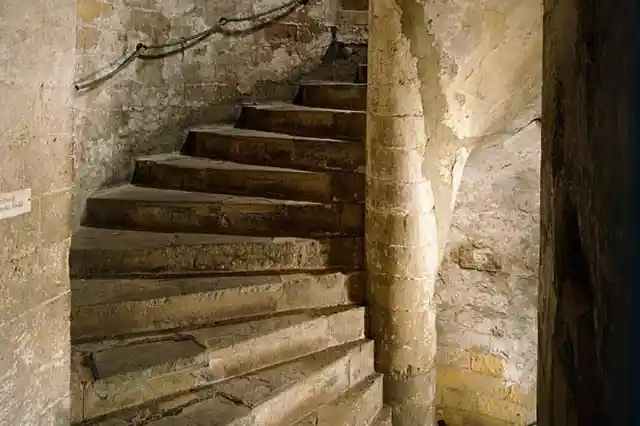
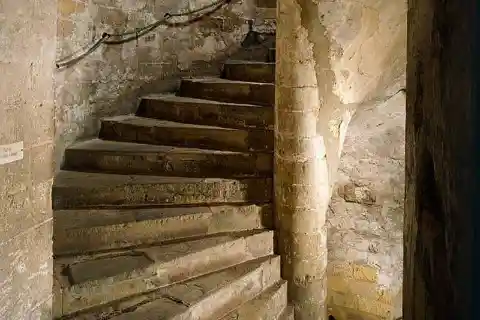
On the other hand, those going down the stairs to defend the castle would have the advantage of the full swing of a weapon.
Attending Church Was A Must
On top of everything that most castles provided, one of the essential aspects of any such structure was an onsite chapel. However, this was typically reserved for the lord and his family to attend mass.
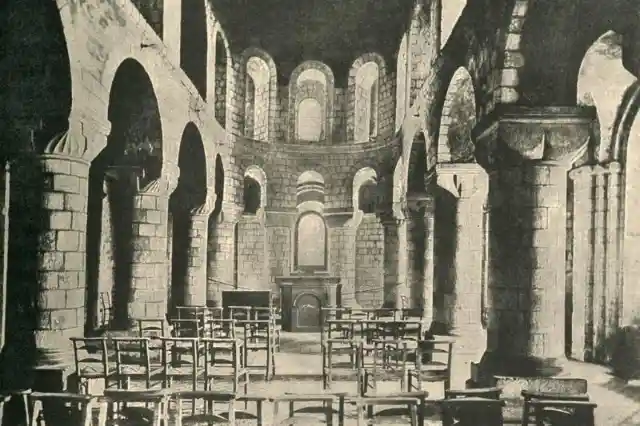
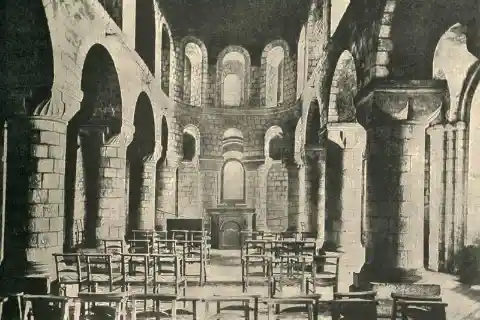
In some instances, the chapel was the only other room aside from the great hall that would be distinguishable from the rest of the castle. Although many people still attend religious services today, back then, it was so commonplace that people didn't even have to leave their homes.
Other Than The Lord And Lady, People Were There To Serve
Maintaining a castle is a lot of work, which is why there were so many people living in them at one time. However, the work was very clearly divided. The majority of the people there were only there to serve the lord and lady of the castle, as well as their family members.
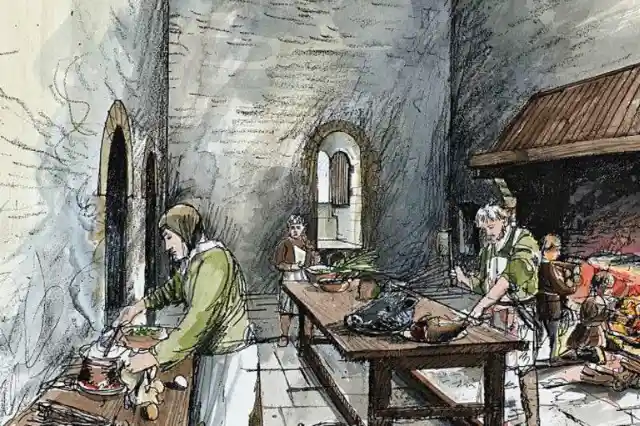
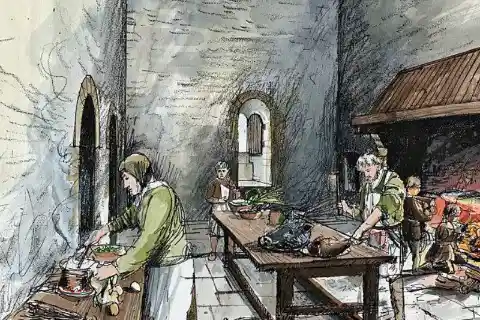
Their job was to make the lord and his family feel comfortable and handle any of the daily chores that needed to be done. On the other hand, the lord dealt with political matters and made decisions regarding his keep.
The Lord And Lady Lived In A 'Solar'
Although the vast majority of those living in the castle had to be in a communal setting, that certainly wasn't the case for the lord and lady.


Although they didn't live there every second of their lives, when they were there, they resided in a place in the castle known as the solar. The solar was typically located at the top of one of the towers and was one of the few places that anyone could have privacy.
The Lords Of Castles Ate Like Kings
Although kings had their own castles, the lords who had their own also lived in extravagance, especially when it came to food. More often than not, meals were served in a series of courses with each containing what we would now consider rare meats such as peacock, porpoise, and swan.
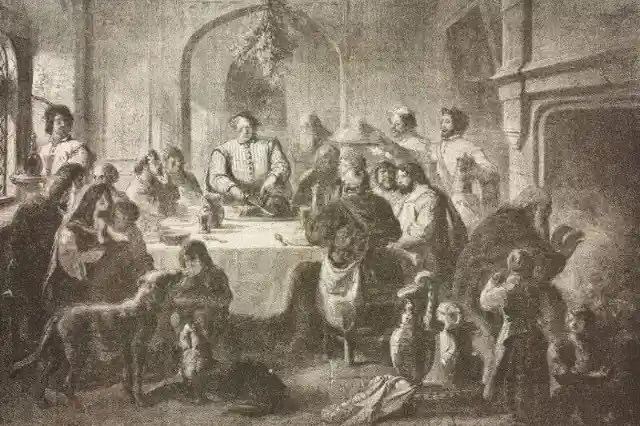
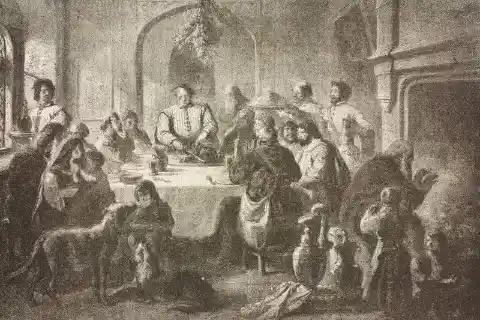
Many also ate their food in what was known as a "trencher," which was a hollowed-out piece of bread that was filled with the meats served. Nobles ate very few vegetables, which may have resulted in countless health problems in royal families.
They Kept Enough Guards As Needed
By definition, castles were pointless unless there were soldiers there to guard them. However, the number of guards housed at a castle greatly varied depending on the situation.
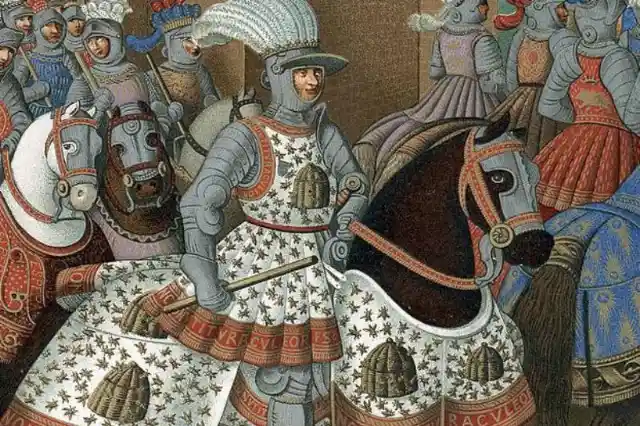
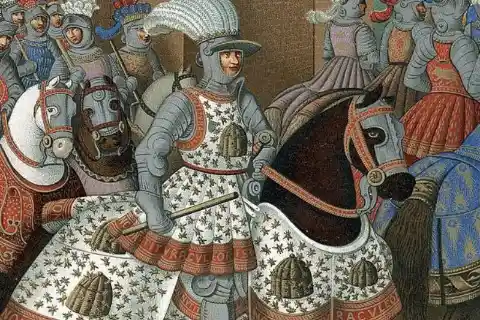
During a time of peace, maybe a few dozen knights were needed as a light defense to raise the portcullis and other simple duties. Yet, in a time of war, especially a siege, as many soldiers as possible were forced into the castle to hold the structure. Keep reading for more about the hygienic practices involved with living in medieval times!
Don't Swim In The Moat!
While the primary purpose of a moat surrounding a castle was to protect the castle against attackers, it also helped with waste disposal. Many medieval castles also used a plumbing system that would flush all of the waste right into the surrounding moat — known as Garderobes.
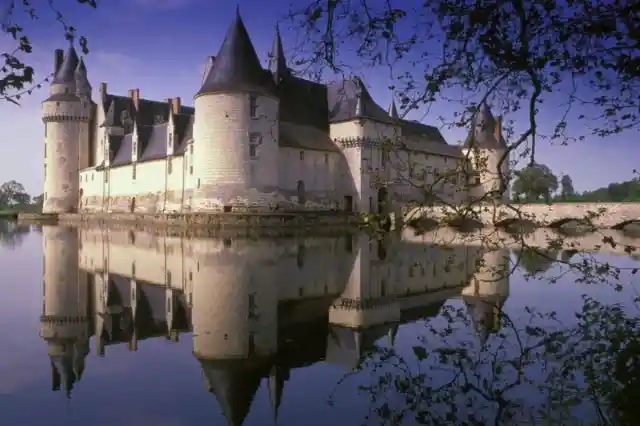
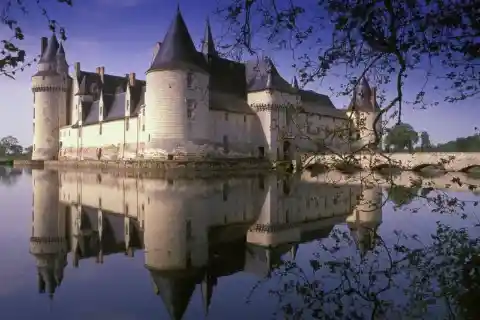
The plumbing system extended outside of the walls of the castle that could be opened to empty into the moat. So, if someone did attempt to cross the moat, they would be met with far worse than just a body of water.
Without Forks, Food Was Often Contaminated
The Print Collector/Print Collector/Getty ImagesAlthough spoons and knives were available at the time, forks weren't, which resulted in much of the lower class eating with their hands. While this might not seem like the worst thing, considering that we still eat many things with our hands today, back then, their hands were far dirtier.
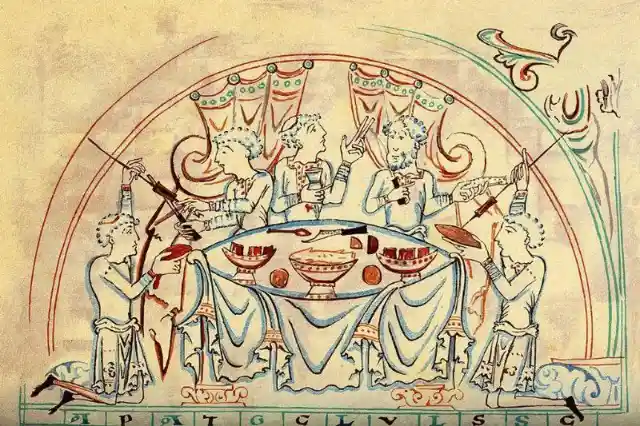
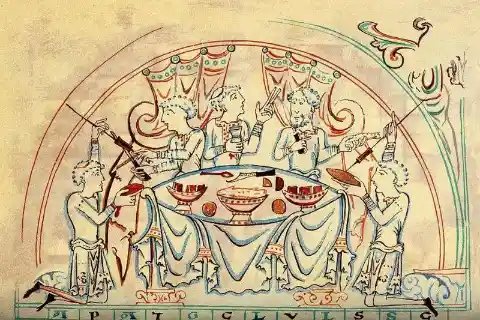
While we frequently wash our hands with soap and water, this was uncommon back then, with most people didn't even wash their hands after going to the bathroom, working with animals, or worse. This resulted in a lot of people getting sick by contaminating their food.
Surgery Had Little To No Sterilization
Although there was some degree of medicine and surgical procedures during the Middle Ages, the concept of bacteria and microorganisms wasn't known, and surgery often resulted in the death of the patient.
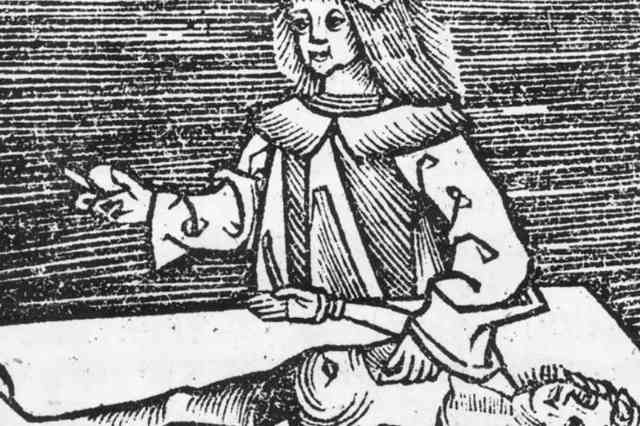
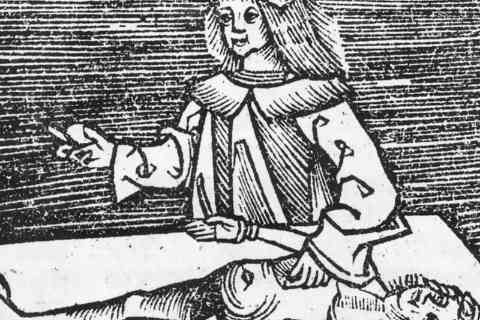
While sterilization is one of the most important aspects of any surgery today, back then, physicians wouldn't always wash their hands or even clean their equipment before performing an operation. It wasn't until the mid-1800s that people began washing their hands after Hungarian doctor Ignaz Semmelweis discovered that clean hands and instruments lowered the risk of infection.
Urine Was Used For Unlikely Purposes
Human urine was used for a variety of purposes in the Middle Ages, including as an antiseptic to clean wounds. As if that wasn't enough, even though clothes were rarely washed, when they were, it wasn't uncommon for urine to be used as a cleaning agent.
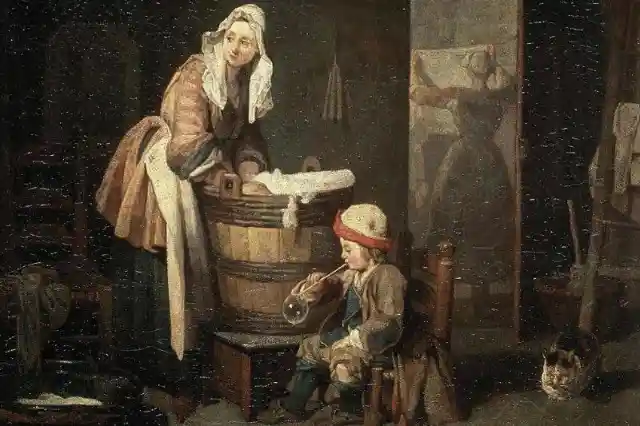
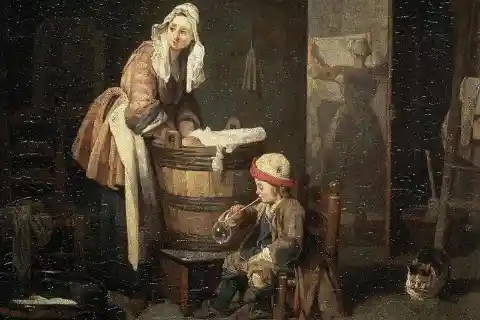
In order to get stains out of clothes, it was common for people to use a combination of ash, lye, green grapes, and urine. Considering that their clothes weren't washed for extended periods of time, surely using urine didn't help in regards to their smell.
Many Peasant Men Didn't Shave
While some peasants did have the opportunity to wash their hair every now and then, shaving was not at the top of the list in terms of hygiene. At the time, mirrors were made of blackened glass or polished metal, so it was difficult to shave even if you wanted to.
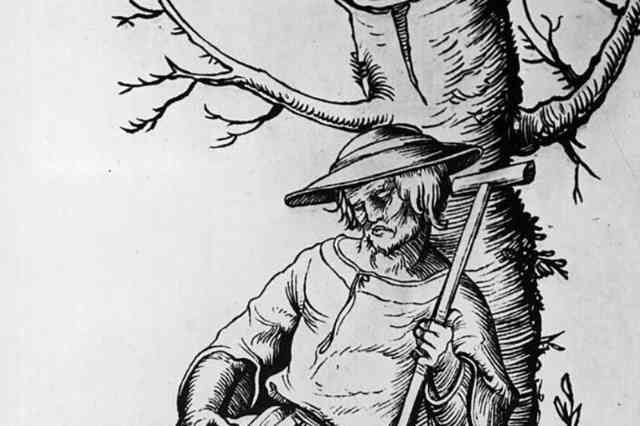
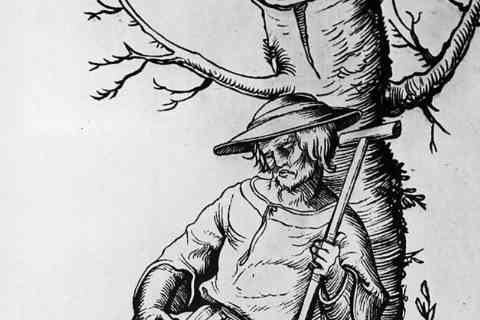
For the majority of the population, the only option men had was to visit a barber to get a proper shave. However, this required money and resulted in a lot of men foregoing shaving altogether.
Beds Were Not A Space Of Cleanliness
Unless the individual was a member of the nobility, their bed was likely made of straw. While this might make sense, the problem was that the straw was rarely changed. On top of that, it was slept on by someone who had been working outside all day and rarely bathed.
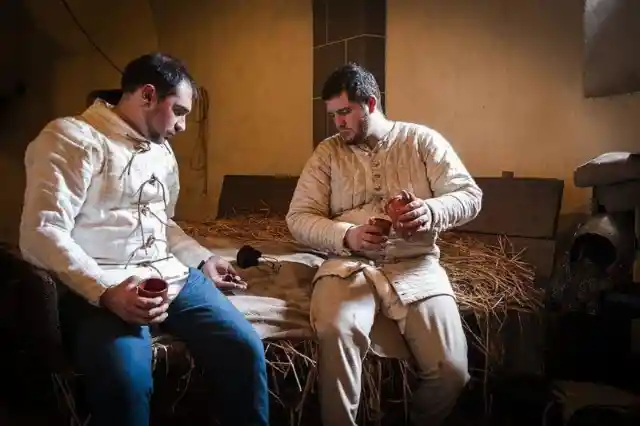
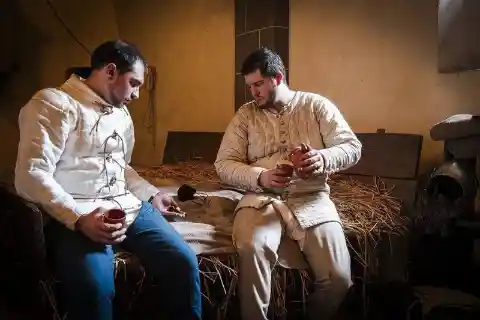
This made beds particularly enticing to fleas and lice, which would make the straw bed their home. However, some preventative measures were taken, such as mixing herbs and flowers into the straw.
Chamber Pots Were The Norm
Because there was no plumbing, and the majority of people didn't live in a castle that had actual bathrooms, most people resorted to using chamber pots. These were bowls or pots that were typically placed under one's bed so they could relieve themselves during the night.
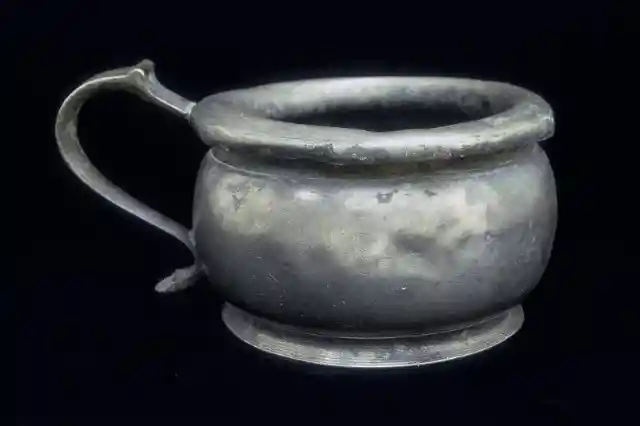
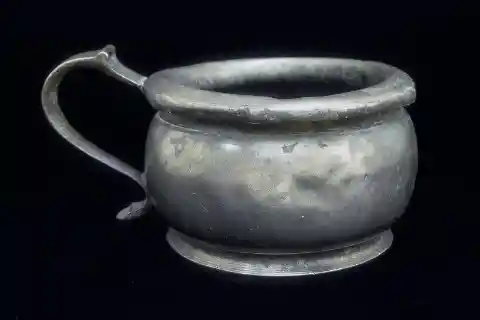
Once they took care of their business, they would usually push it back under their bed. Emptying chamber pots wasn't the most sanitary process either. It wasn't uncommon for people to throw the contents of their chamber pots out of their windows and onto the street below.
A Peculiar Cure For Baldness
Male baldness is not a new phenomenon, and men have been self-conscious about their balding heads for centuries. In the Middle Ages, there was a supposed cure for baldness for those who were daring enough to try it.


In a medical handbook written in the 17th century, a mixture of chicken or pigeon droppings mixed with ashes, lye and applied to the head was said to help the balding man. It's not clear how many desperate men tried this formula, but surely it didn't work.
Bloodletting Was Thought To Cure Anything
During the medieval period, a standard medical procedure was bloodletting, a process in which amounts of a person's blood was removed from their body to cure an illness. The blood could be removed by making an incision and letting the blood drip into a basin, or leeches that would supposedly suck out the "contaminated" blood.
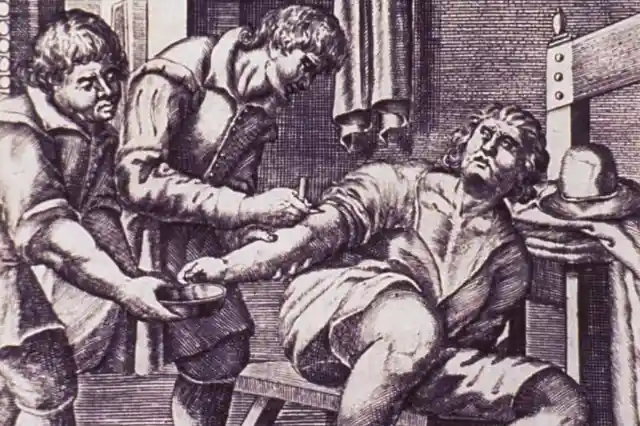
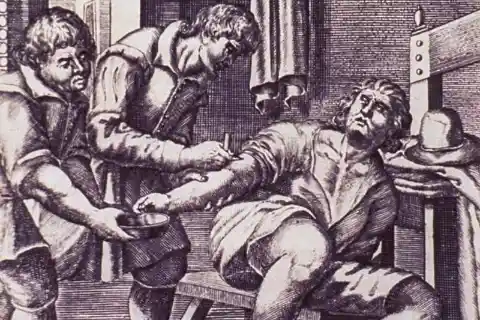
The leeches would be applied to the "sick" part of the body where they would feed until they grew fat and fell off. Sometimes, people would even perform bloodletting on themselves until it was discovered that removing blood from the body does the opposite of curing an illness.